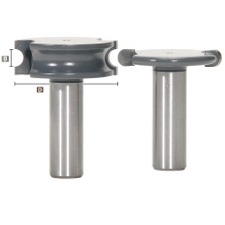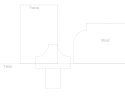I'm going to make a stack of trays for a bee house project. I cam across this design from an online vendor and was curious how I might mill the joint circled in red.
I know I can skin this cat and create registration points with a different technique but I'm curious as to how to mill the tongue/bead portion of the joint. Any ideas?
Here's a link to pictures of the full item ...
Spring Reusable Wood Trays for Mason Bees -8mm
Todd

I know I can skin this cat and create registration points with a different technique but I'm curious as to how to mill the tongue/bead portion of the joint. Any ideas?
Here's a link to pictures of the full item ...
Spring Reusable Wood Trays for Mason Bees -8mm
Todd



